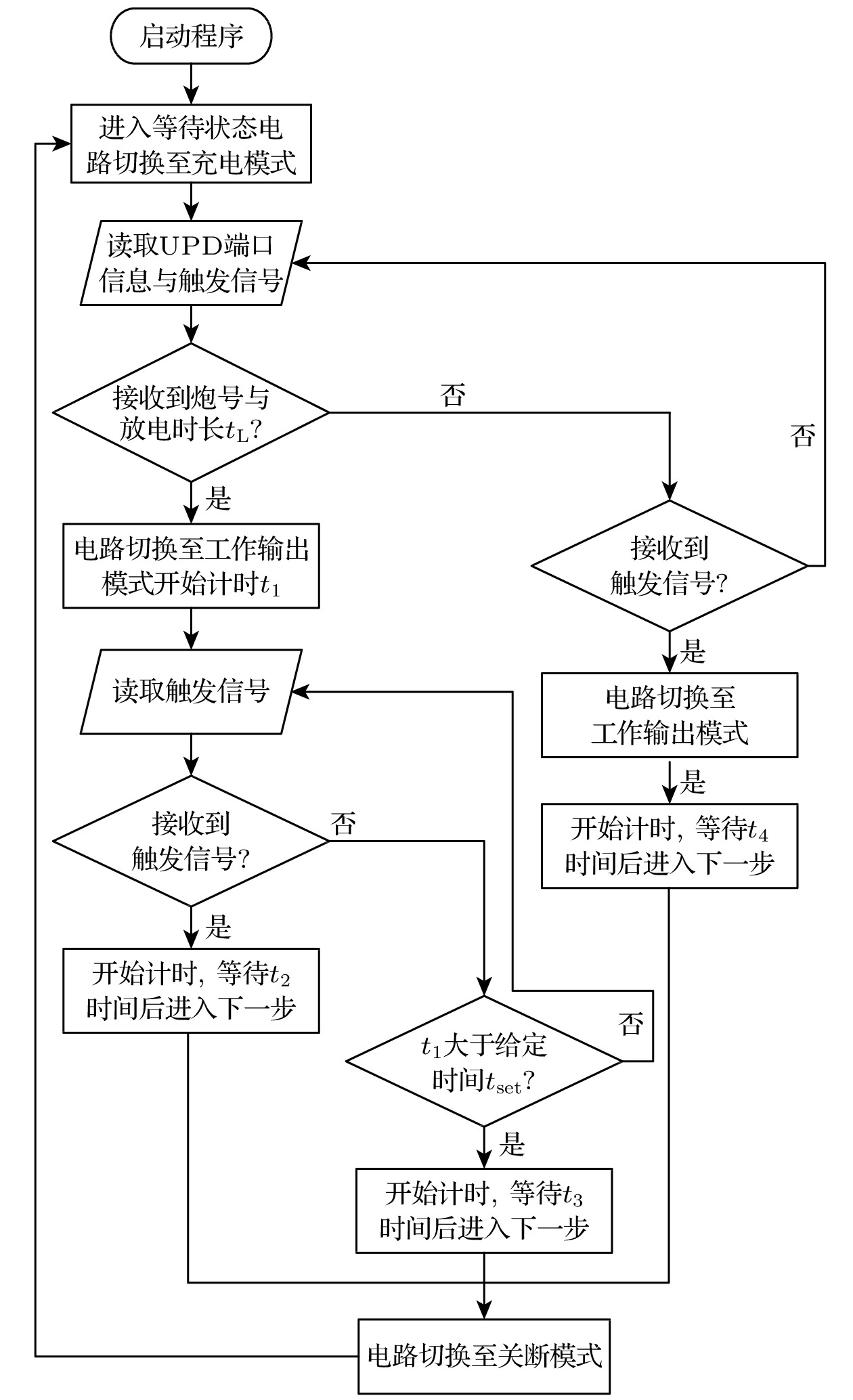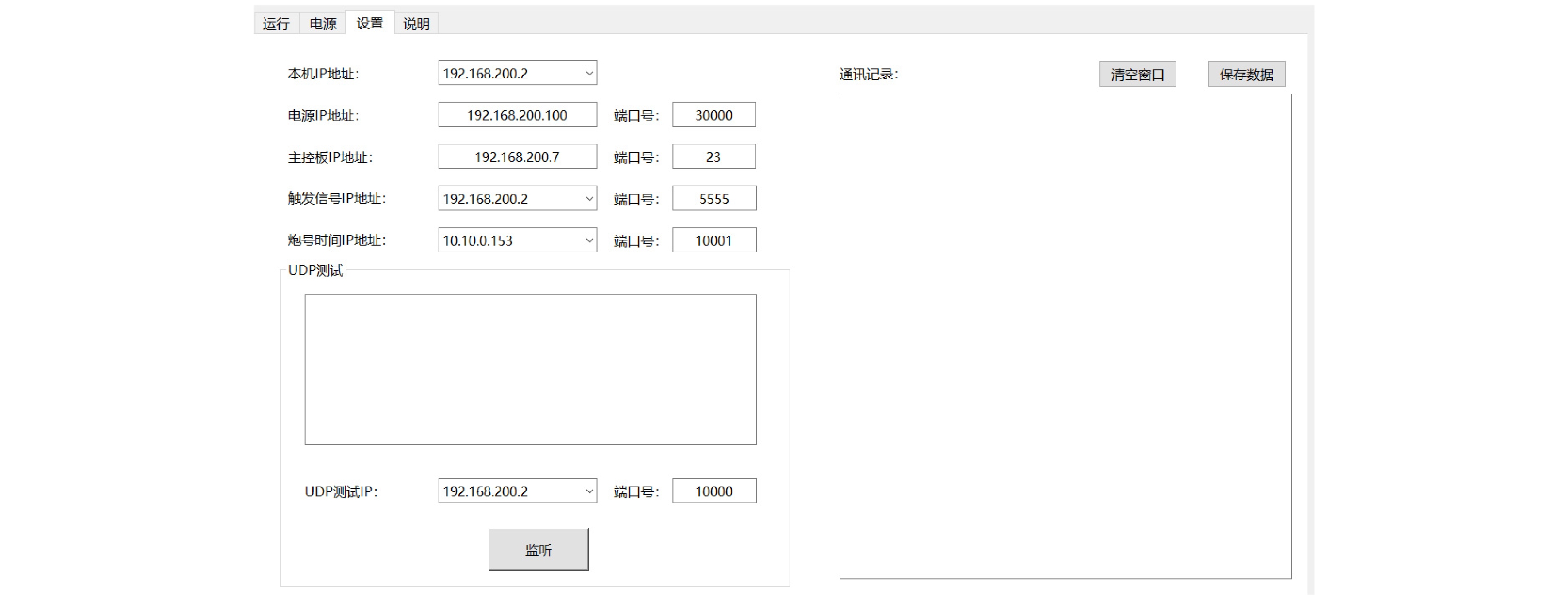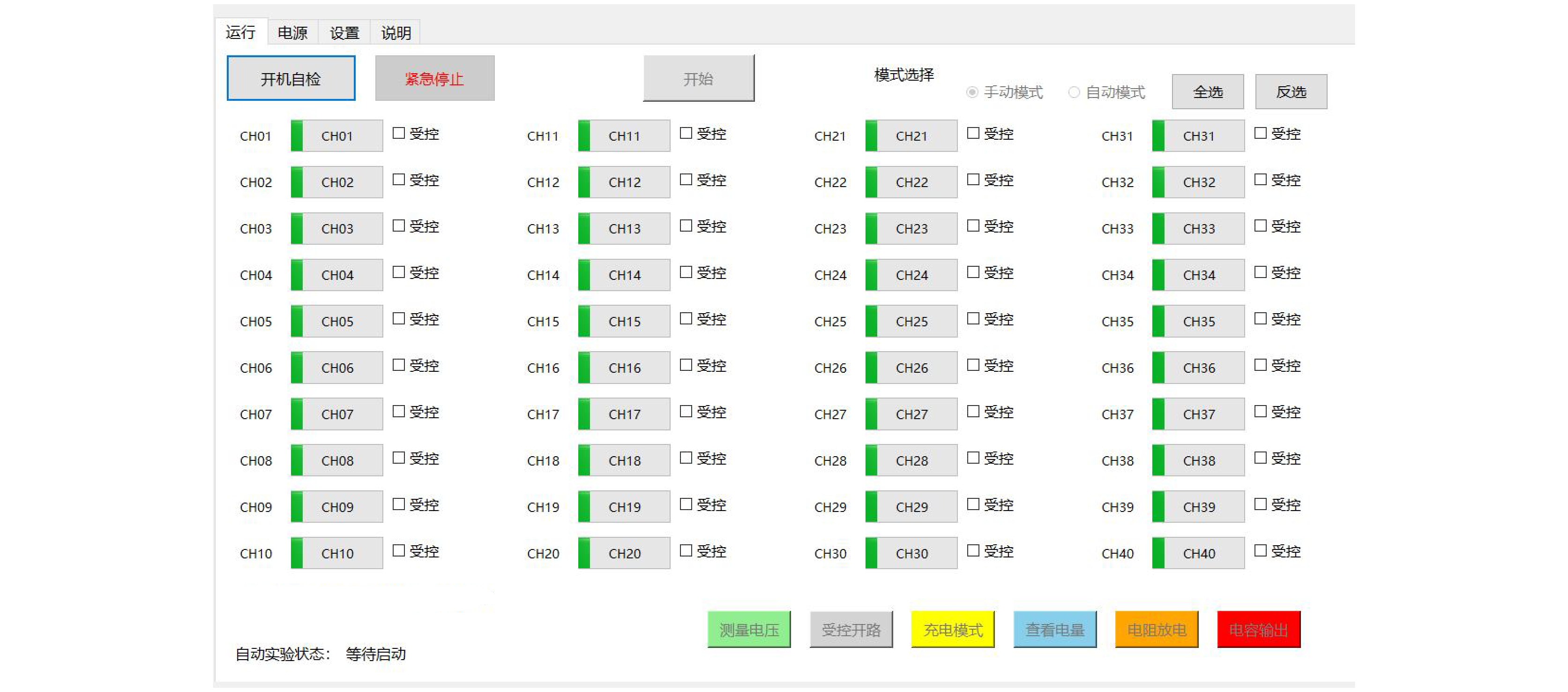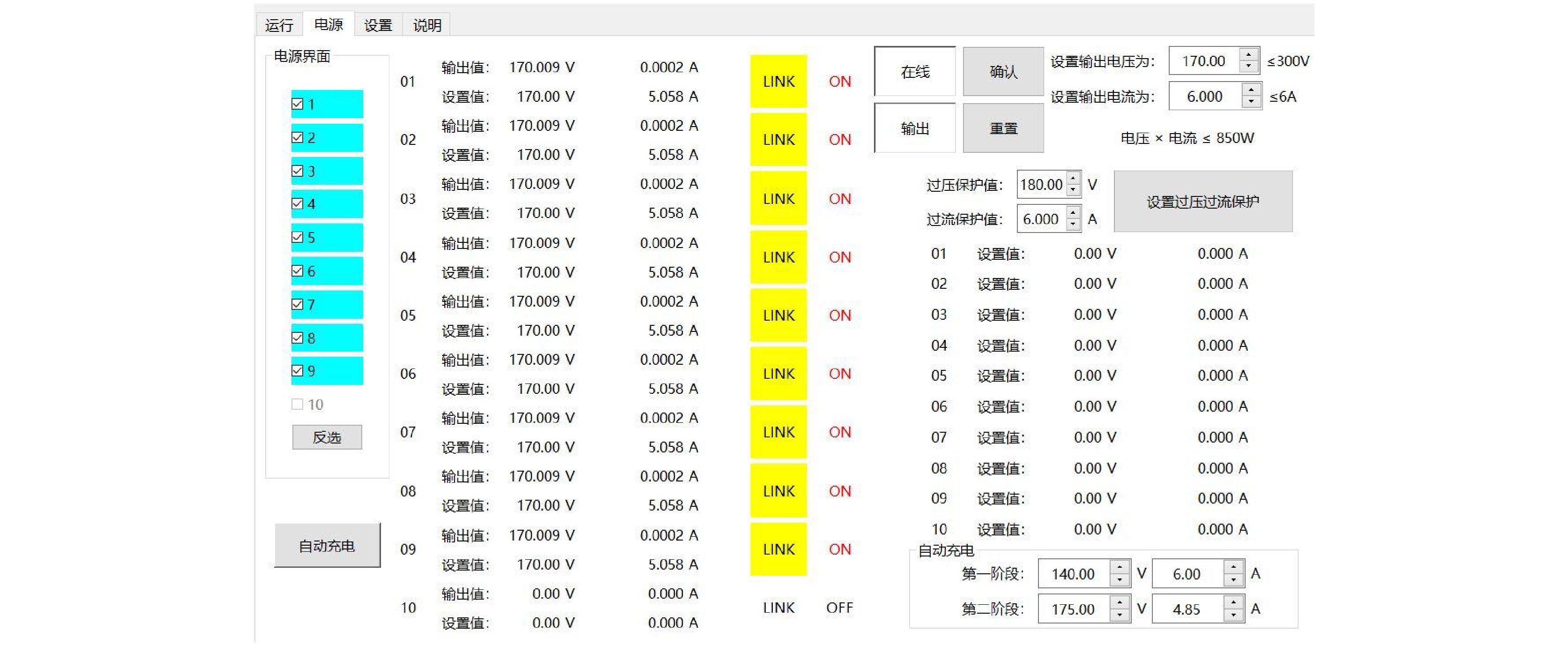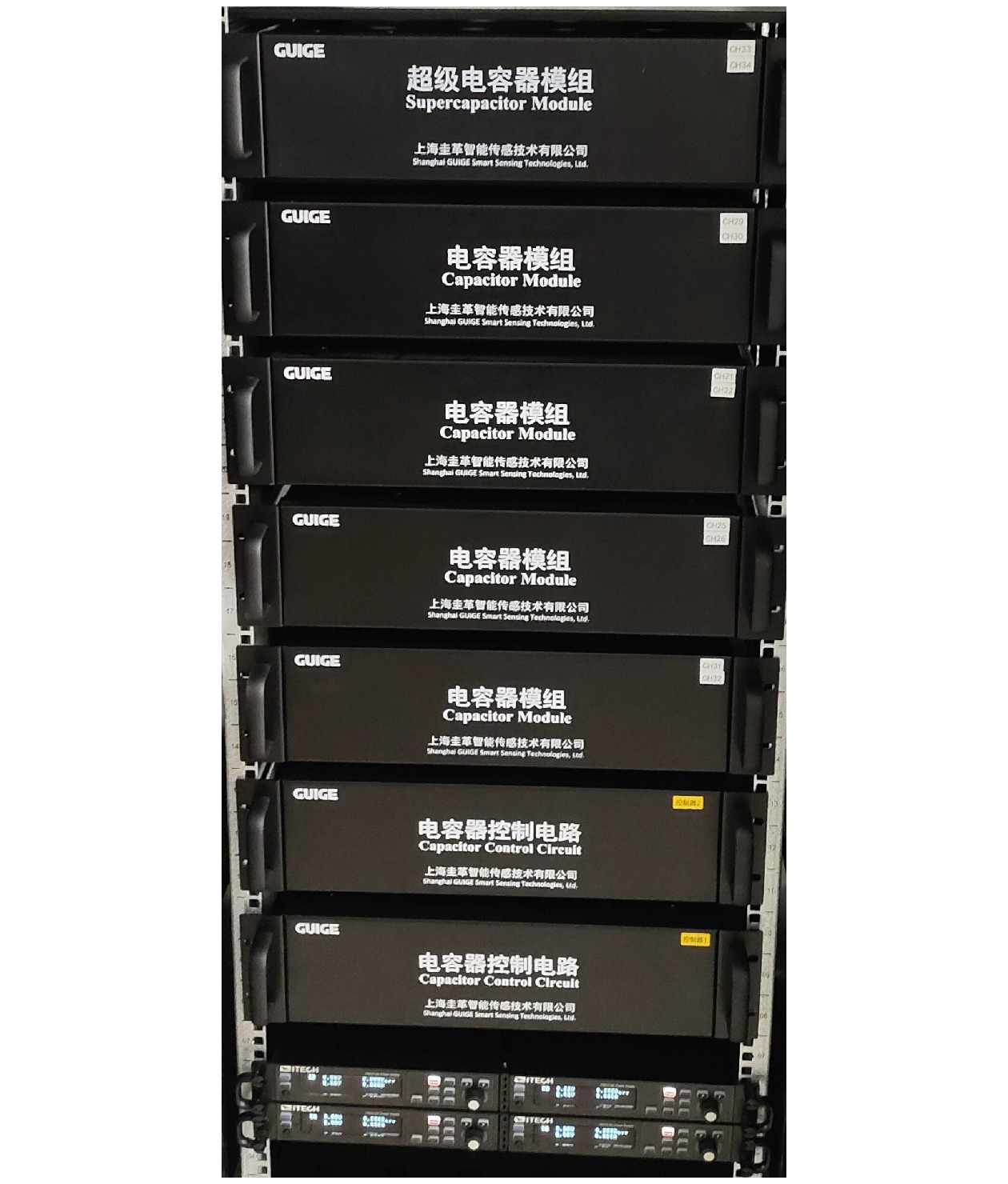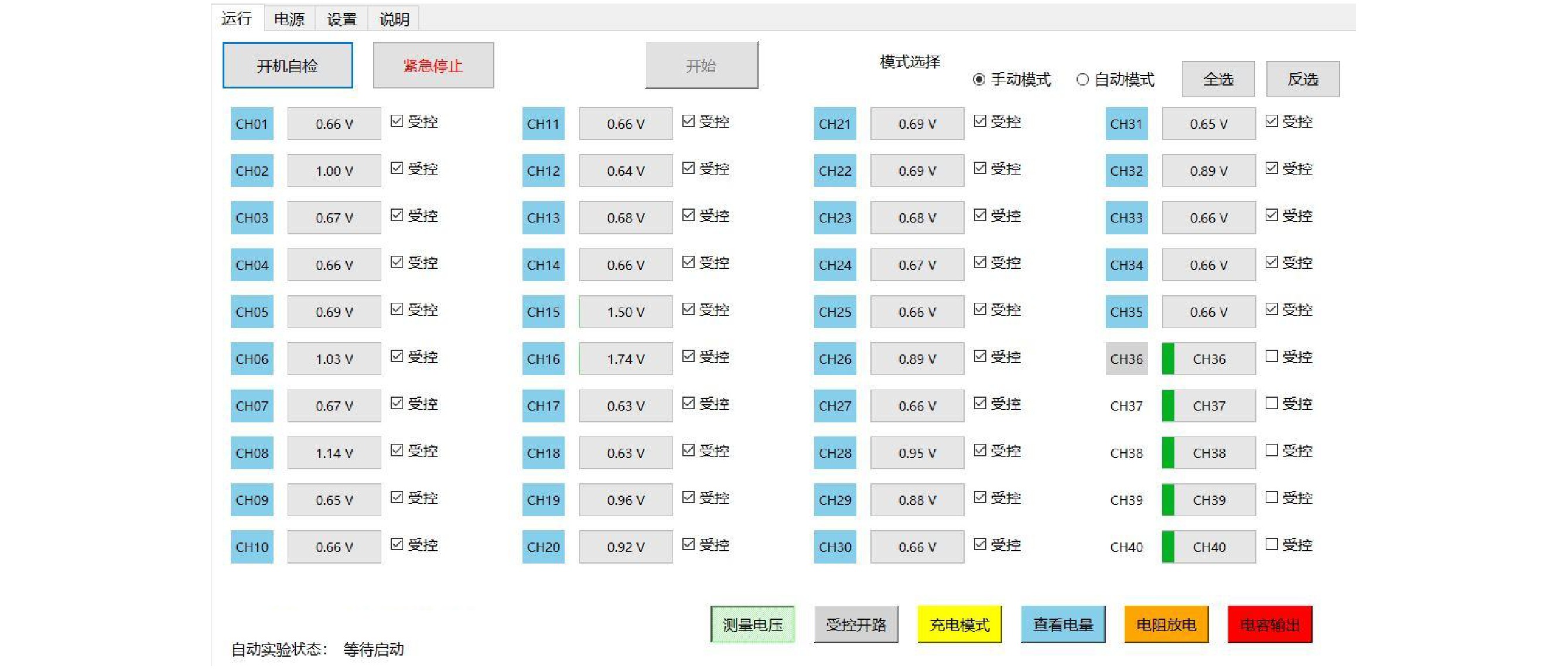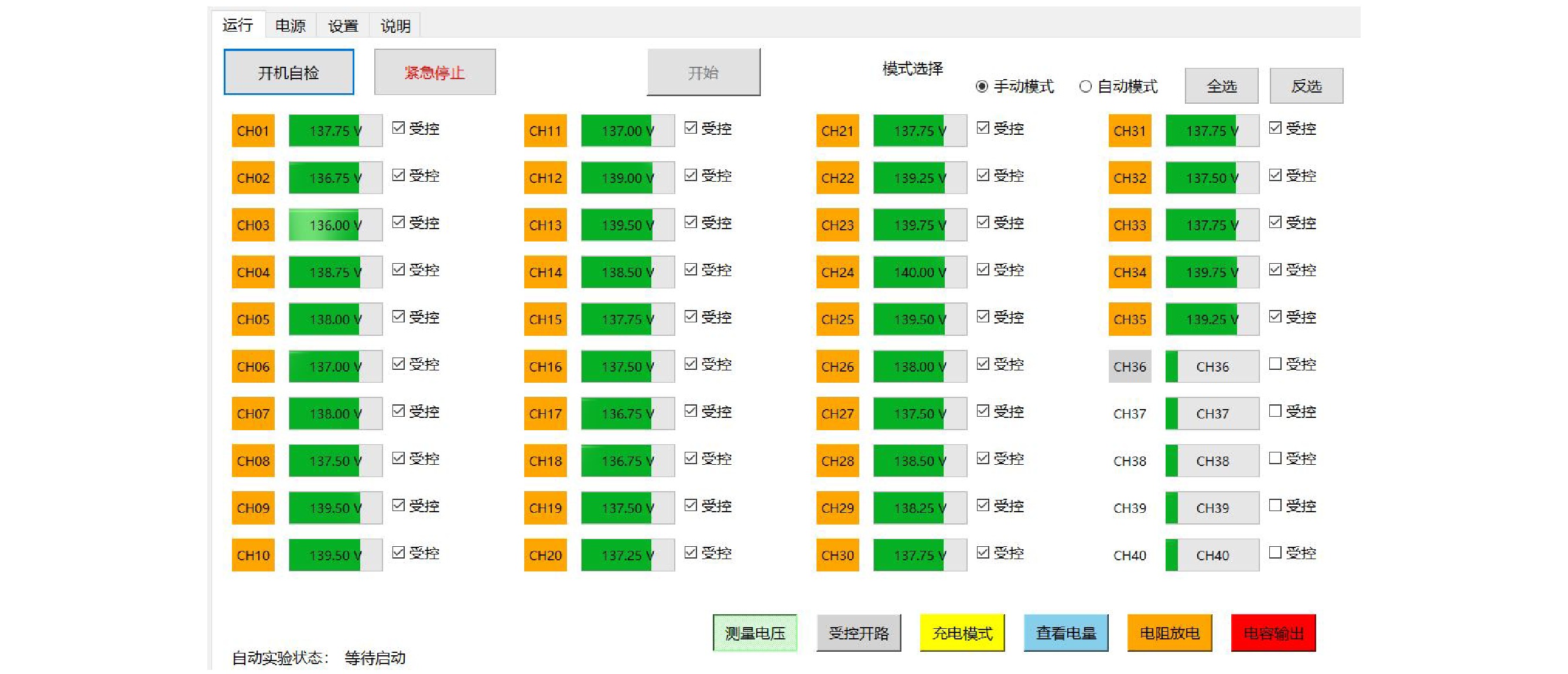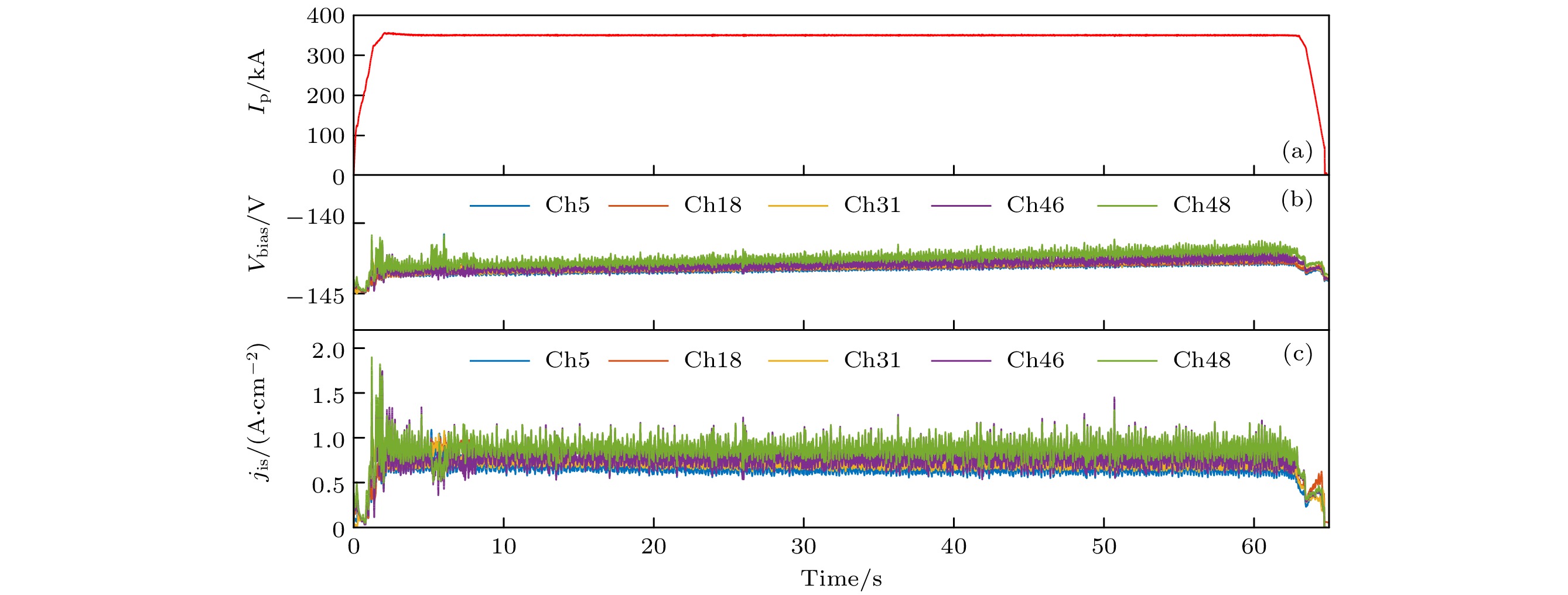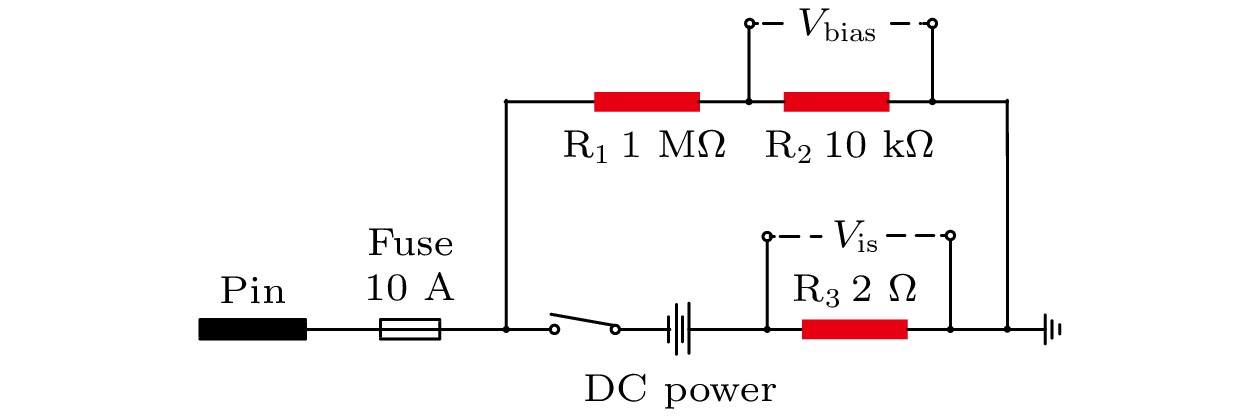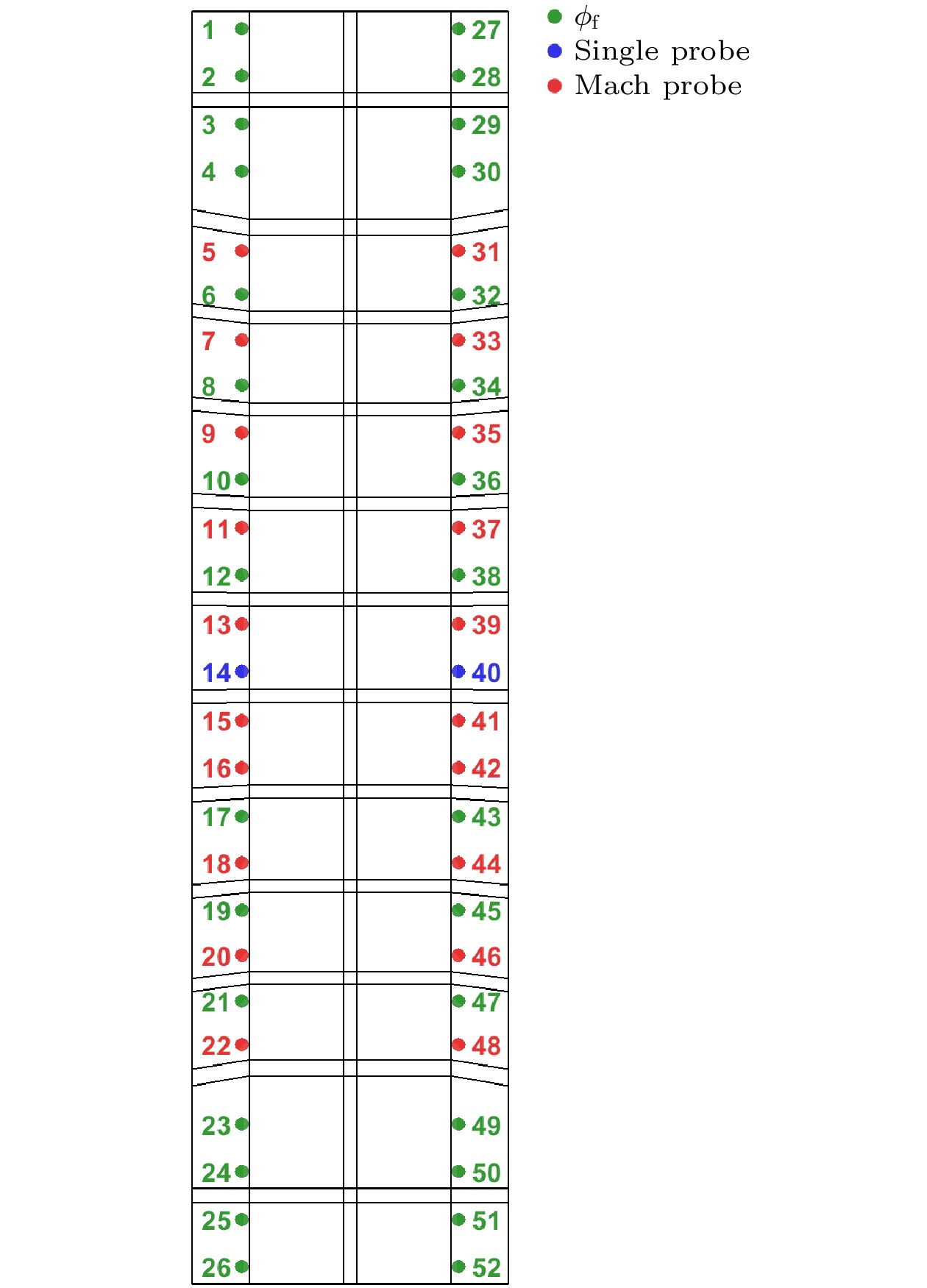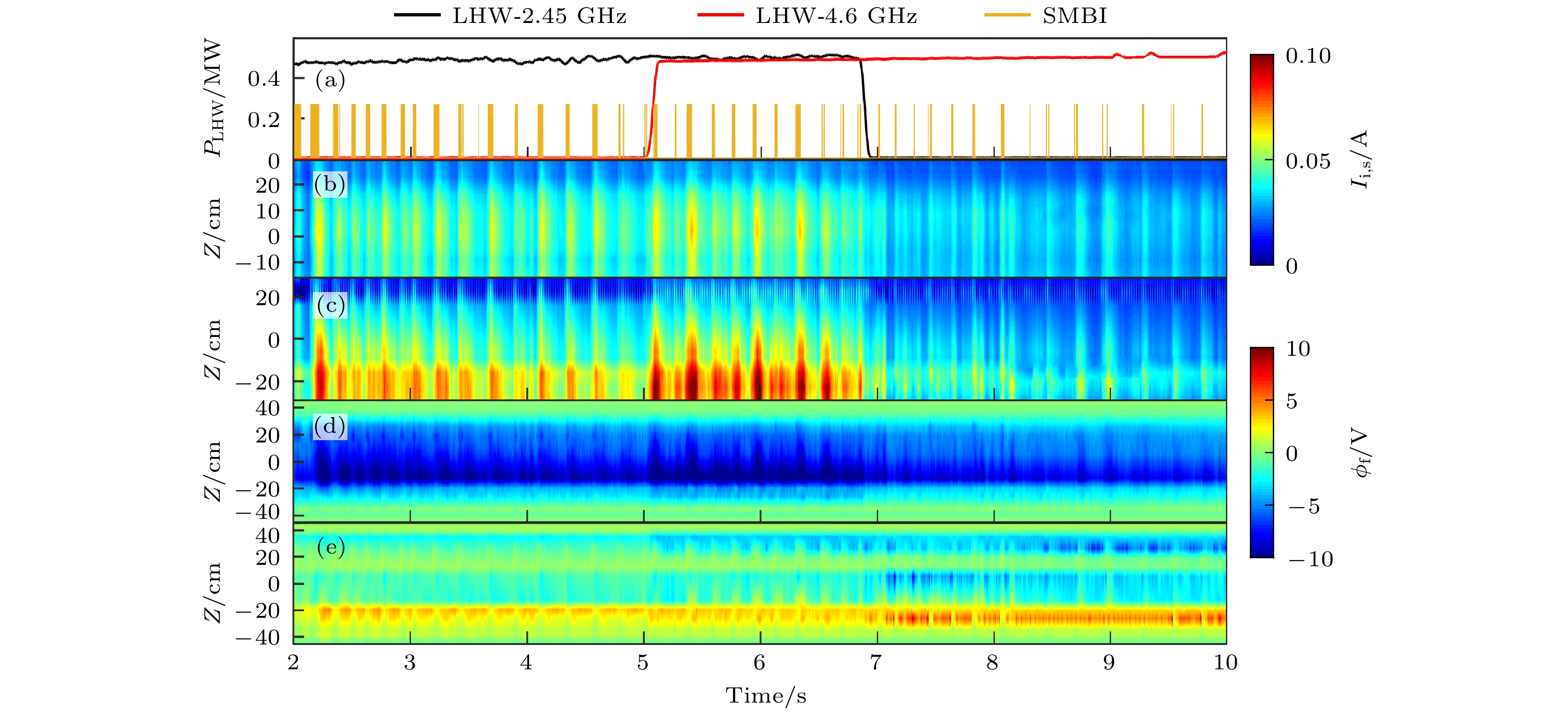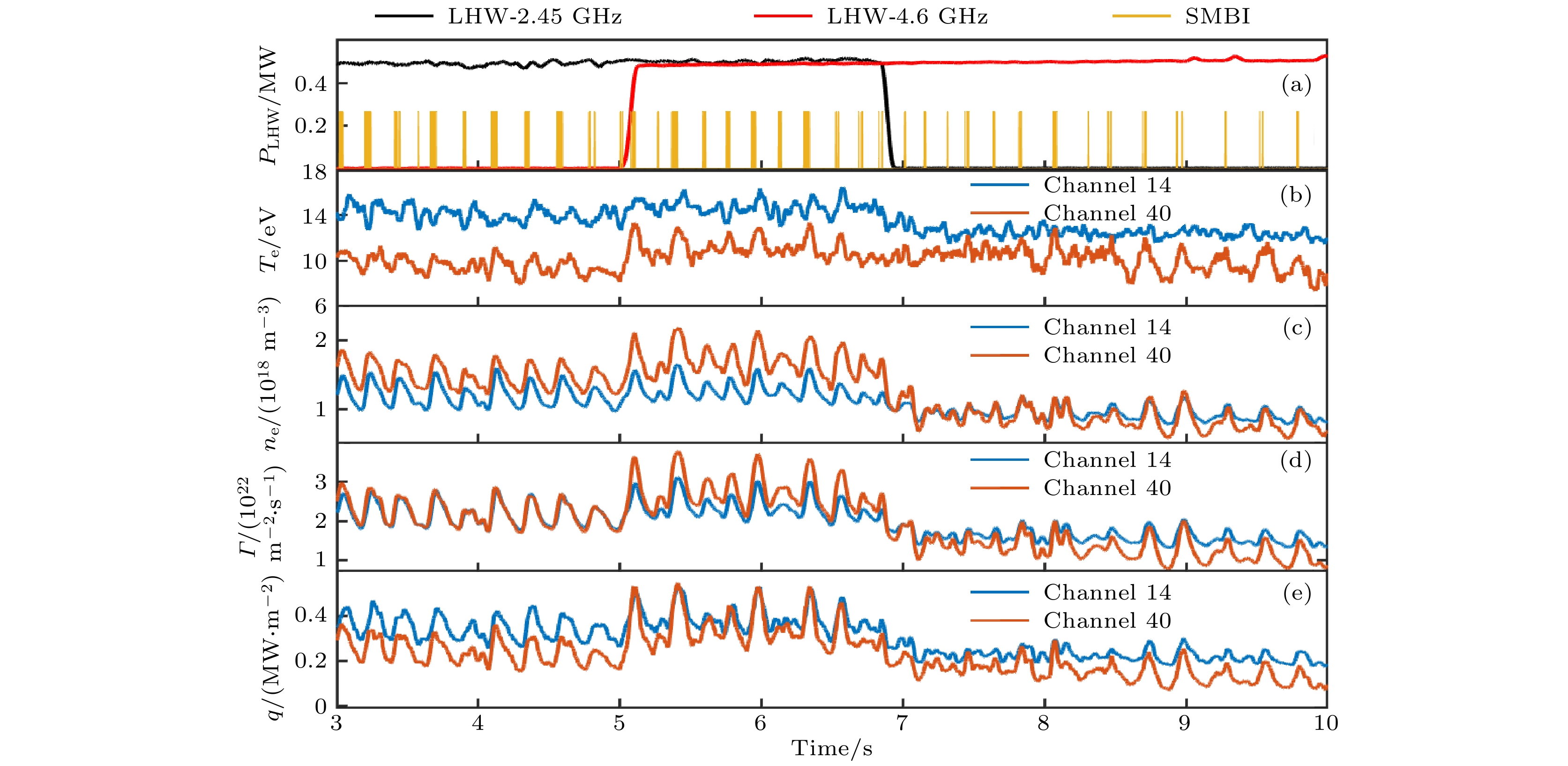-
The EAST limiter probe is installed on the front surface of guard limiter, which consists of two columns and can operate in floating potential mode, ion saturation current mode, and swept single-probe mode simultaneously. When Langmuir probe operates in the ion saturation current mode, it requires a stable biasing voltage. To meet this requirement, a large capacitor is used to provide a biasing voltage for the probe. Comparing with the 9 V dry batteries that are commonly used in magnetic confinement fusion devices, employing a large capacitor offers advantages such as flexible voltage adjustment, easy maintenance, and environmental friendliness. Therefore, we have designed and tested a complete set of supercapacitor charge-discharge control circuitry. In this work, a control software is developed for the supercapacitor charge-discharge control circuitry based on the Python language to enable the remote and automatic controlling of the circuitry operation. As demonstrated in experiments, the capacitor charge-discharge control circuitry can supply stable biasing voltage output for the probe under long-pulse discharge, and it is workable in complex electromagnetic environment of magnetic confinement fusion device. By implementing the supercapacitor charge-discharge control circuitry in EAST limiter probe diagnostics, the three-dimensional distributions of plasma parameters are measured, such as ion saturation current, floating potential, electron temperature, and plasma density. In a lower hybrid wave (LHW) heating experiment, the 2.45 GHz LHW is found to generate larger electron density than the 4.6 GHz LHW, and the largest electron density appears when both the 2.45 GHz and 4.6 GHz LHWs are turned on simultaneously. These experimental results confirm that supercapacitor charge-discharge control circuitry can be operated reliably and stably.
-
Keywords:
- Langmuir probe /
- supercapacitor /
- magnetic confinement fusion plasma /
- tokamak
[1] Johnson E O, Malter L 1950 Phys. Rev. 80 58
 Google Scholar
Google Scholar
[2] Perkins R J, Hosea J C, Taylor G, Bertelli N, Kramer G J, Luo Z P, Qin C M, Wang L, Xu J C, Zhang X J 2019 Plasma. Phys. Contr. F 61 045011
 Google Scholar
Google Scholar
[3] Wang F M, Gan K F, Gong X Z, Team E 2013 Plasma Sci. Technol. 15 225
 Google Scholar
Google Scholar
[4] Yan L W, Hong W Y, Qian J, Luo C W, Pan L 2005 Rev. Sci. Instrum. 76 093506
 Google Scholar
Google Scholar
[5] Ming T F, Zhang W, Chang J F, Wang J, Xu G S, Ding S, Yan N, Gao X, Guo H Y 2009 Fusion. Eng. Des. 84 57
 Google Scholar
Google Scholar
[6] Xu J C, Wang L, Xu G S, Luo G N, Yao D M, Li Q, Cao L, Chen L, Zhang W, Liu S C, Wang H Q, Jia M N, Feng W, Deng G Z, Hu L Q, Wan B N, Li J, Sun Y W, Guo H Y 2016 Rev. Sci. Instrum. 87 083504
 Google Scholar
Google Scholar
[7] Yang J, Chen Z P, Liu H, Wang T, Zhu M C, Song Z, Wang Z, Zhuang G, Ding Y, Team J T 2019 Plasma Sci. Technol. 21 105105
 Google Scholar
Google Scholar
[8] Labombard B, Lipschultz B 1986 Rev. Sci. Instrum. 57 2415
 Google Scholar
Google Scholar
[9] Asakura N, Shimizu K, Hosogane N, Itami K, Tsuji S, Shimada M 1995 Nucl. Fusion 35 381
 Google Scholar
Google Scholar
[10] Buchenauer D, Hsu W L, Smith J P, Hill D N 1990 Rev. Sci. Instrum. 61 2873
 Google Scholar
Google Scholar
[11] Liu S C, Liao L, Wei W Y, Liang Y, Xu J C, Cao L, Li S, Li L, Meng L Y, Qian J P, Zang Q, Wang L, Xu S, Cai J, Yan N, Ma Q, Zhao N, Chen R, Hu G H, Liu J B, Liu X J, Ming T F, Li L T, Sun Y, Zeng L, Li G Q, Yao D M, Xu G S, Gong X Z, Gao X, EAST Team 2022 Fusion. Eng. Des. 180 113162
 Google Scholar
Google Scholar
[12] Demidov V I, Ratynskaia S V, Rypdal K 2002 Rev. Sci. Instrum. 73 3409
 Google Scholar
Google Scholar
[13] 李永春, 丁伯江, 李妙辉, 王茂, 刘亮, 吴陈斌, 阎广厚 2022 核电子学与探测技术 42 116
 Google Scholar
Google Scholar
Li Y C, Ding B J, Li M H, Wang M, Liu L, Wu C B, Yan G H 2022 Nucl. Electron. Detect. Technol. 42 116
 Google Scholar
Google Scholar
[14] Back R, Bengtson R D 1997 Rev. Sci. Instrum. 68 377
 Google Scholar
Google Scholar
[15] Yan N, Naulin V, Xu G S, Rasmussen J J, Wang H Q, Liu S C, Wang L, Liang Y, Nielsen A H, Madsen J, Guo H Y, Wan B N 2014 Plasma Phys. Contr. F 56 095023
 Google Scholar
Google Scholar
[16] Myra J R, Lau C, Van Compernolle B, Vincena S, Wright J C 2020 Phys. Plasmas 27 072506
 Google Scholar
Google Scholar
[17] Xu G S, Wan B N, Zhang W 2006 Rev. Sci. Instrum. 77 063505
 Google Scholar
Google Scholar
[18] Myra J R 2021 J. Plasm. Phys. 87 1
 Google Scholar
Google Scholar
[19] Liu P, Xu G S, Wang H Q, Jiang M, Wang L, Zhang W, Liu S C, Yan N, Ding S Y 2013 Plasma Sci. Technol. 15 619
 Google Scholar
Google Scholar
[20] Colas L, Urbanczyk G, Goniche M, Hillairet J, Bernard J M, Bourdelle C, Fedorczak N, Guillemaut C, Helou W, Bobkov V, Ochoukov R, Jacquet P, Lerche E, Zhang X, Qin C, Klepper C C, Lau C, Van Compernolle B, Wukitch S J, Lin Y, Ono M, Contributors J, Team A U, Team E, Team W, Ios I 2022 Nucl. Fusion 62 016014
 Google Scholar
Google Scholar
[21] Ochoukov R, Whyte D G, Brunner D, D'Ippolito D A, LaBombard B, Lipschultz B, Myra J R, Terry J L, Wukitch S J 2014 Aip. Conf. Proc. 1580 267
 Google Scholar
Google Scholar
-
图 14 #106532次放电低杂波注入功率与限制器探针测量参数随时间演化 (a) 2.45 GHz (黑色)与4.6 GHz (红色)低杂波注入功率, 超声分子束注入信号(橘黄色); (b)限制器探针左侧离子饱和流分布; (c)右侧离子饱和流分布; (d)左侧悬浮电位分布; (e)右侧悬浮电位分布
Figure 14. Temporal evolutions of LHW power and SOL parameters measured by limiter probe are presented as follows: (a) LHW heating power of 2.45 GHz antenna (black) and 4.6 GHz antenna (red), along with the SMBI signal (orange); (b) distribution of ion saturation current of the limiter probe on the left side; (c) distribution of ion saturation current on the right side; (d) distribution of floating potential on the left side; (e) distribution of floating potential on the right side.
图 15 #106532次放电低杂波注入功率与限制器探针测量参数随时间演化 (a) 2.45 GHz (黑色)与4.6 GHz (红色)低杂波注入功率, 超声分子束注入信号(橘黄色); 限制器探针测量的(b)电子温度、(c)电子密度、(d)粒子通量和(e)热通量, 其中蓝色线条代表第14号探针(位于限制器左侧阵列中部), 红色线条代表第40号探针(位于限制器右侧阵列中部)
Figure 15. Temporal evolution of LHW power and SOL parameters measured by limiter probe are presented as follows: (a) LHW power of 2.45 GHz antenna (black) and 4.6 GHz antenna (red), along with the SMBI signal (orange); (b) electron temperature; (c) electron density; (d) particle flow; (e) heat flow. The blue lines represent channel 14 (in the left array of the limiter, near the midplane), and the red lines represent channel 40 (in the right array of the limiter, near the midplane).
表 1 超级电容器充放电电路4种模式下继电器开关的状态组合
Table 1. State combinations of relay switches in four modes of supercapacitor charging and discharging circuits.
电路模式 S1 S2 S3 S4 S5 S6 充电 闭合 闭合 闭合 断开 断开 断开 工作输出 断开 断开 断开 断开 闭合 闭合 电容放电 断开 断开 闭合 闭合 断开 断开 关断 断开 断开 断开 断开 断开 断开 -
[1] Johnson E O, Malter L 1950 Phys. Rev. 80 58
 Google Scholar
Google Scholar
[2] Perkins R J, Hosea J C, Taylor G, Bertelli N, Kramer G J, Luo Z P, Qin C M, Wang L, Xu J C, Zhang X J 2019 Plasma. Phys. Contr. F 61 045011
 Google Scholar
Google Scholar
[3] Wang F M, Gan K F, Gong X Z, Team E 2013 Plasma Sci. Technol. 15 225
 Google Scholar
Google Scholar
[4] Yan L W, Hong W Y, Qian J, Luo C W, Pan L 2005 Rev. Sci. Instrum. 76 093506
 Google Scholar
Google Scholar
[5] Ming T F, Zhang W, Chang J F, Wang J, Xu G S, Ding S, Yan N, Gao X, Guo H Y 2009 Fusion. Eng. Des. 84 57
 Google Scholar
Google Scholar
[6] Xu J C, Wang L, Xu G S, Luo G N, Yao D M, Li Q, Cao L, Chen L, Zhang W, Liu S C, Wang H Q, Jia M N, Feng W, Deng G Z, Hu L Q, Wan B N, Li J, Sun Y W, Guo H Y 2016 Rev. Sci. Instrum. 87 083504
 Google Scholar
Google Scholar
[7] Yang J, Chen Z P, Liu H, Wang T, Zhu M C, Song Z, Wang Z, Zhuang G, Ding Y, Team J T 2019 Plasma Sci. Technol. 21 105105
 Google Scholar
Google Scholar
[8] Labombard B, Lipschultz B 1986 Rev. Sci. Instrum. 57 2415
 Google Scholar
Google Scholar
[9] Asakura N, Shimizu K, Hosogane N, Itami K, Tsuji S, Shimada M 1995 Nucl. Fusion 35 381
 Google Scholar
Google Scholar
[10] Buchenauer D, Hsu W L, Smith J P, Hill D N 1990 Rev. Sci. Instrum. 61 2873
 Google Scholar
Google Scholar
[11] Liu S C, Liao L, Wei W Y, Liang Y, Xu J C, Cao L, Li S, Li L, Meng L Y, Qian J P, Zang Q, Wang L, Xu S, Cai J, Yan N, Ma Q, Zhao N, Chen R, Hu G H, Liu J B, Liu X J, Ming T F, Li L T, Sun Y, Zeng L, Li G Q, Yao D M, Xu G S, Gong X Z, Gao X, EAST Team 2022 Fusion. Eng. Des. 180 113162
 Google Scholar
Google Scholar
[12] Demidov V I, Ratynskaia S V, Rypdal K 2002 Rev. Sci. Instrum. 73 3409
 Google Scholar
Google Scholar
[13] 李永春, 丁伯江, 李妙辉, 王茂, 刘亮, 吴陈斌, 阎广厚 2022 核电子学与探测技术 42 116
 Google Scholar
Google Scholar
Li Y C, Ding B J, Li M H, Wang M, Liu L, Wu C B, Yan G H 2022 Nucl. Electron. Detect. Technol. 42 116
 Google Scholar
Google Scholar
[14] Back R, Bengtson R D 1997 Rev. Sci. Instrum. 68 377
 Google Scholar
Google Scholar
[15] Yan N, Naulin V, Xu G S, Rasmussen J J, Wang H Q, Liu S C, Wang L, Liang Y, Nielsen A H, Madsen J, Guo H Y, Wan B N 2014 Plasma Phys. Contr. F 56 095023
 Google Scholar
Google Scholar
[16] Myra J R, Lau C, Van Compernolle B, Vincena S, Wright J C 2020 Phys. Plasmas 27 072506
 Google Scholar
Google Scholar
[17] Xu G S, Wan B N, Zhang W 2006 Rev. Sci. Instrum. 77 063505
 Google Scholar
Google Scholar
[18] Myra J R 2021 J. Plasm. Phys. 87 1
 Google Scholar
Google Scholar
[19] Liu P, Xu G S, Wang H Q, Jiang M, Wang L, Zhang W, Liu S C, Yan N, Ding S Y 2013 Plasma Sci. Technol. 15 619
 Google Scholar
Google Scholar
[20] Colas L, Urbanczyk G, Goniche M, Hillairet J, Bernard J M, Bourdelle C, Fedorczak N, Guillemaut C, Helou W, Bobkov V, Ochoukov R, Jacquet P, Lerche E, Zhang X, Qin C, Klepper C C, Lau C, Van Compernolle B, Wukitch S J, Lin Y, Ono M, Contributors J, Team A U, Team E, Team W, Ios I 2022 Nucl. Fusion 62 016014
 Google Scholar
Google Scholar
[21] Ochoukov R, Whyte D G, Brunner D, D'Ippolito D A, LaBombard B, Lipschultz B, Myra J R, Terry J L, Wukitch S J 2014 Aip. Conf. Proc. 1580 267
 Google Scholar
Google Scholar
Catalog
Metrics
- Abstract views: 4749
- PDF Downloads: 69
- Cited By: 0














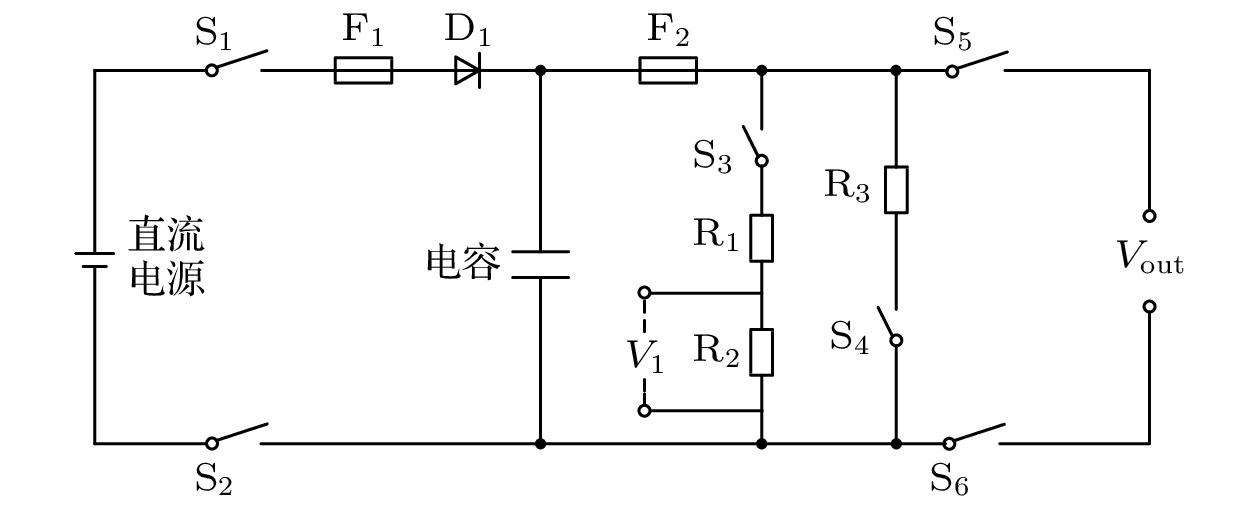
 DownLoad:
DownLoad:
